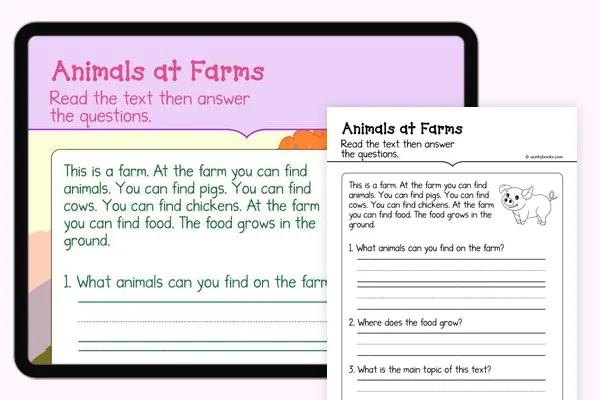Malala Yousafzai: Champion for Education — Passage
Malala Yousafzai was born on July 12, 1997, in Pakistan. She grew up in a small town called Mingora in the Swat Valley. Malala loved going to school and learning new things. Her father ran a school, and he believed that girls should have the same right to education as boys.
When Malala was about 10 years old, a group called the Taliban took control of her region. The Taliban had very strict rules. One of their rules was that girls should not go to school. They closed many girls' schools and threatened families who sent their daughters to learn.
Malala and her father thought this rule was unfair. In 2009, when Malala was just 11 years old, she began writing a blog for the BBC (British Broadcasting Corporation). In her blog, she wrote about what life was like under Taliban rule and why girls deserved to go to school. She used a fake name to protect herself, but she was still speaking out bravely.
As Malala continued to speak up for girls' education, she became well-known. She appeared in a documentary and gave interviews. She said, "One child, one teacher, one book, one pen can change the world." The Taliban were angry about her speaking out against their rules.
On October 9, 2012, when Malala was 15 years old, she was riding the bus home from school. A Taliban gunman got on the bus, asked which girl was Malala, and shot her in the head. Malala was badly injured, but she survived. She was taken to a hospital in Pakistan and later transferred to England for better medical care.
The attack on Malala shocked people around the world. Many people were inspired by her courage. After recovering from her injuries, Malala continued her fight for education. She said that the attack only made her stronger and more determined.
In 2014, at age 17, Malala became the youngest person ever to win the Nobel Peace Prize. This is one of the most important awards in the world. She used the prize money to build schools and help girls get an education.
Today, Malala continues her work through the Malala Fund, which helps girls around the world go to school. She graduated from Oxford University in England in 2020. Malala shows us that young people can make a big difference in the world and stand up for what they believe in, even when it's difficult or dangerous.
Where was Malala Yousafzai born?
EnglandIndiaPakistanAfghanistanWhat did Malala's father do for work?
He was a doctorHe ran a schoolHe was a government officialHe was a farmerWhat group took control of Malala's region when she was growing up?
The United NationsThe TalibanThe Peace CorpsThe Red CrossWhat rule did Malala speak out against?
Girls not being allowed to wear colorful clothesBoys not being allowed to play sportsGirls not being allowed to go to schoolChildren having to work instead of playHow did Malala first share her ideas with the world?
She wrote a blog for the BBCShe gave speeches at the United NationsShe wrote a bookShe made videos for YouTubeHow old was Malala when she was attacked?
11 years old13 years old15 years old17 years oldWhat happened after Malala was attacked?
She stopped speaking about educationShe moved to a different part of PakistanShe was treated in a hospital and continued her activismShe became a teacherWhat major award did Malala win in 2014?
The Academy AwardThe Nobel Peace PrizeThe Presidential Medal of FreedomThe Olympic Gold MedalHow old was Malala when she won this award?
15 years old16 years old17 years old18 years oldWhat is the Malala Fund?
Money set aside for Malala's educationAn organization that helps girls around the world go to schoolA prize given to brave studentsA scholarship program only for Pakistani girls



















